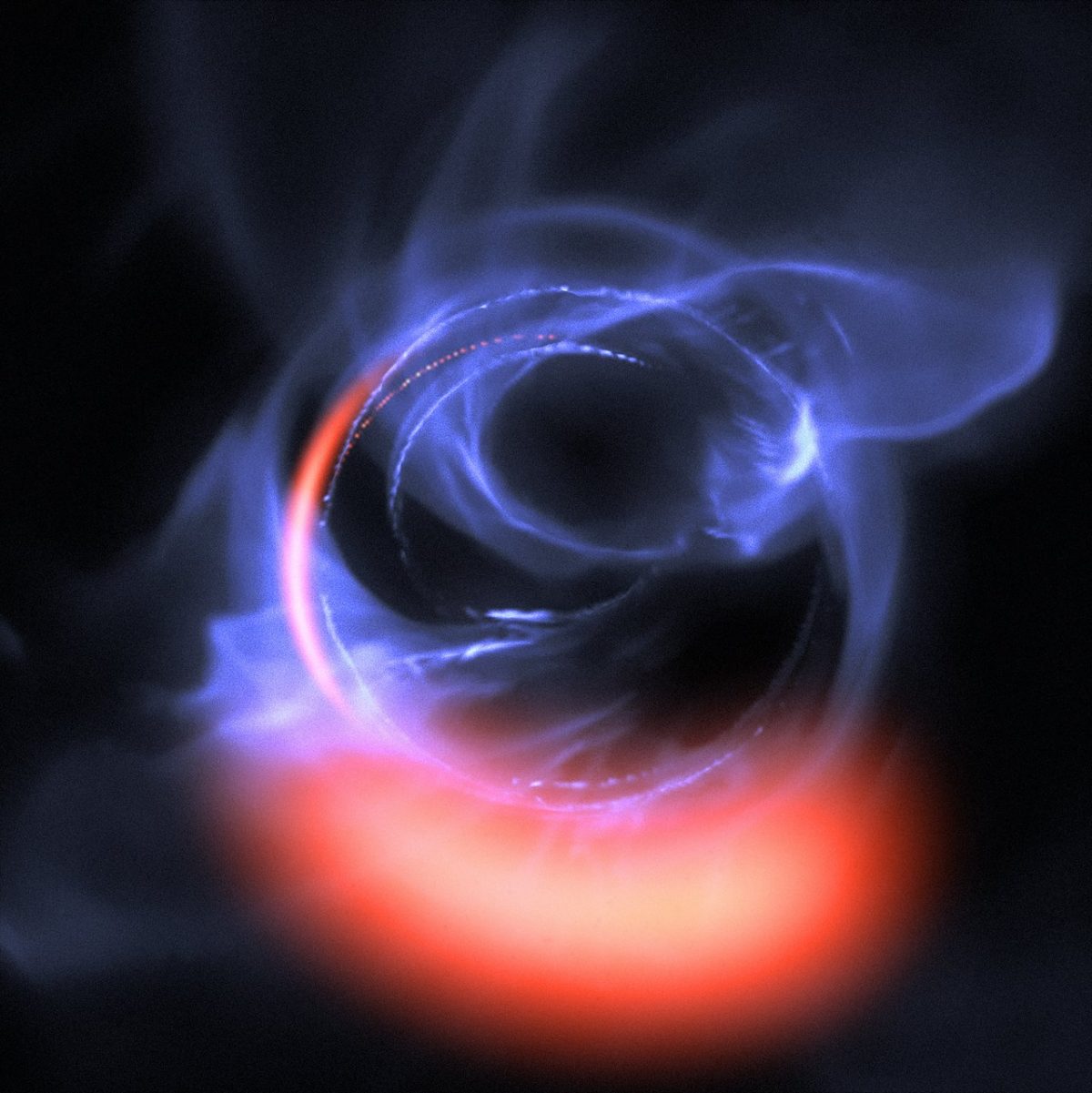Scientists Confirm There's a Monster Black Hole in the Heart of our Galaxy
Posted on Categories Discover Magazine

Using the ESO’s sensitive GRAVITY instrument, researchers have confirmed that the enormous object at the heart of our galaxy is — as scientists have assumed for many years — a supermassive black hole. (Credit: ESO/Gravity Consortium/L. Calçada)
Scientists have finally confirmed that the massive object at the heart of our galaxy is, in fact, a supermassive black hole.
Researchers used the European Southern Observatory’s sensitive GRAVITY instrument on the Very Large Telescope (VLT) to observe infrared radiation flares coming from the accretion disc around Sagittarius A* — the massive object at the center of our galaxy. Scientists think that most galaxies have a supermassive black hole at their center, but they’d never before had the data and observations to prove it.
To measure the effects of gravity near to a black hole, scientists needed to observe an object actually traveling close to it. They found their mark in a small star called S2, whose orbit takes it deep within Sagittarius A*’s gravity well every 16 years. As they watched, they saw three bright flares traveling around the black hole’s event horizon at about 30 percent of the speed of light — around 216 million miles per hour.
It’s exactly what Einstein’s theory of general relativity predicts would occur when a hot spot (like S2) passes close to a black hole weighing as much as 4 million suns, and the observation helps to confirm that it’s really there.
“We were closely monitoring S2, and of course we always keep an eye on Sagittarius A*. During our observations, we were lucky enough to notice three bright flares from around the black hole — it was a lucky coincidence!” Oliver Pfuhl, a scientist at the Max Planck Institute for Extraterrestrial Physics (MPE) in Garching, Germany, said in a statement.
Correct Assumptions
This is the first time ever that scientists have observed material orbiting this close to a black hole’s physical point of no return. These are also the most detailed observations ever made of material orbiting so near to a black hole.
“It’s mind-boggling to actually witness material orbiting a massive black hole at 30% of the speed of light. GRAVITY’s tremendous sensitivity has allowed us to observe the accretion processes in real time in unprecedented detail,” Pfuhl said in the statement.
For a long time, scientists have assumed that a supermassive black hole exists at the heart of our galaxy and most other galaxies. But these observations mark the first time scientists can confirm their long-held theory.
“This always was one of our dream projects but we did not dare to hope that it would become possible so soon … the result is a resounding confirmation of the massive black hole paradigm,” Reinhard Genzel, of the MPE, who led the study, said in the statement.